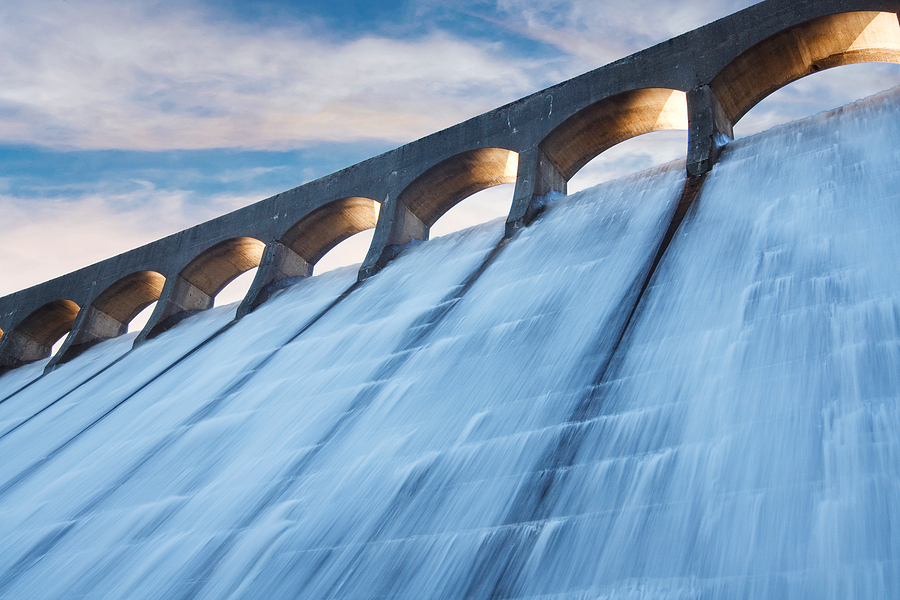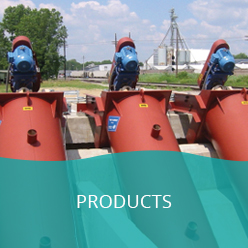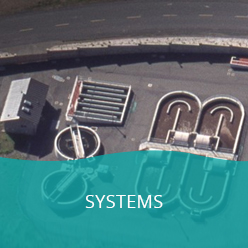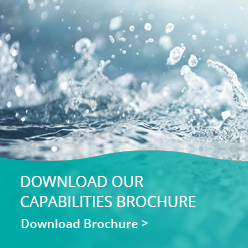2025 brings with it a global focus on a broad transition toward renewable energy sources. Hydropower is one of the largest sources of renewable energy we have today. It’s also one of the oldest and most reliable, making it a vital component in the global renewable energy mix. Hydropower offers the ideal combination of high capacity, efficiency, and low operating costs. In the coming year, Lakeside Equipment is seeing major advancements that keep hydropower at the top of the list for reducing the world’s reliance on fossil fuels.
Here, we’re going to take a look at hydropower in 2025, and the opportunities for growth and development in the renewable energy sector.
5 Top Hydropower Advancements in 2025
In recent years, we’ve seen the hydropower industry experience significant advancements in technology, including the development of small-scale power plants, pumped storage, and modernization of the existing hydropower infrastructure. These are important innovations that have impactfully increased operational efficiency and overall output.
Along with these, the renewable energy sector is continuously exploring new and more efficient ways to harness the power of water. Here are five of the leading advancements and trends to keep track of this coming year in the hydropower sector.
Innovation in Hydropower Technologies
Innovations in hydropower are continually propelling the industry forward, driving growth and development. Innovations like the development of hydroelectric turbines, which are both more efficient and less invasive, are just one example of how the industry is adapting to the needs and demands of global energy usage.
Small-scale power plants, modernization in pumped storage, technology upgrades, and initiatives like the National Hydropower Vision are restructuring the future of hydropower. While the Hydropower Vision Report is not a new initiative, its roadmap has provided a critical structure in evaluating current and future pathways for advancing hydropower in the United States.
Marine and Hydrokinetic Technology
Marine and hydrokinetic technology is used to harness hydropower from the ocean tides and currents. Current projects are looking at the challenges facing the marine and ocean renewable energy industries, and exploring innovative ways to overcome these challenges.
Examples of advancements in marine and hydrokinetic technology include tidal stream generators, instream hydrokinetic devices, and barrage systems. It’s important to explore the capacity of each system, and the environments that they are each most effective in. By doing so, we can begin tapping into renewable energy solutions that can be implemented at a large scale, without jeopardizing aquatic environments.
Initiatives to Preserve Aquatic Life
One of the most significant concerns with hydropower is its impact on aquatic life. Efforts to preserve aquatic life, both in existing and future systems, are a key focus. The industry is taking initiatives to address these concerns with innovations in how turbines are designed and how they function.
In the coming year, this looks like a stronger focus on hydrokinetic turbines, minimum gap runner turbines, and other turbine designs that allow for the safe movement and migration of aquatic life through areas where hydropower plants are located.
Novel Turbines
Different types of novel turbines are being developed to improve the efficiency and power output of hydropower plants. Innovation in this field is heavily focused on increasing flexibility through novel turbine design. The goal is to improve not only the efficiency and cost-effectiveness of hydropower generation but also the overall sustainability of the future of the industry.
An example of this is the use of very low-head turbines, where the head is typically less than 20 meters. These turbines are ideal for placement in locations with limited water resources that previously would have been impossible, or at least inefficient, to leverage for hydropower.
Dynamic Pumped Hydropower
Dynamic pumped hydropower is an innovation being used to maximize energy generation and storage. With this process, the elevation difference between two water reservoirs is used to generate electricity. The system operates by pumping water from a lower reservoir into a higher one during periods of low energy demand. Then during peak periods, the energy is released to generate power.
Dynamic pumped hydropower can help increase grid resilience and flexibility in years to come.
Potential Challenges and Opportunities in Hydropower
As with anything, there are both potential challenges and opportunities as the hydropower industry moves forward in 2025. The industry is facing challenges such as significant upfront investment, developing solutions for environmental concerns, and working within the guidelines of changing regulatory hurdles.
However, the global demand for renewable energy is growing, and hydropower is expected to play a key role in the global transition to a low-carbon, sustainable energy economy.
In the coming year, hydropower facilities are expected to adopt more adaptive models and seek investments in strong infrastructure that is capable of withstanding changing environmental stressors. This might include developing more resilient dams, improving water management systems, and enhancing current monitoring and maintenance technologies.
Hydropower and the Global Adoption of Renewable Energy Sources
In 2025, hydropower is expected to remain the world’s largest source of renewable energy generation and play a critical role in the global-scale transition to a sustainable, low-carbon economy. Just a few years ago, hydropower generation accounted for nearly 30% of renewable energy and more than 6% of energy generated by the United States. These numbers are expected to grow in the coming year, with hydropower accounting for a significant portion of renewable energy growth.
Moving forward, there is a greater awareness of the potential environmental impact of hydropower, including the disruption of natural habitats, ecosystems, and communities. The industry today is shifting to more sustainable and environmentally friendly practices that not only address these issues, but place hydropower as a leading, eco-friendly, and sustainable energy source for the future.
On a global scale, investments in infrastructure, regulatory reform, and financial incentives are set to support the development of new, more eco-friendly hydropower projects.
Hydropower for the Future
Hydropower is expected to continue to play one of the most important roles in the global transition to more renewable energy resources in the coming year. This is an exciting time for the hydropower industry, with innovative breakthroughs and emerging technologies. Yes, there are challenges, but Lakeside Equipment is poised to meet them head-on and overcome them with modern advancements, providing a cleaner, more sustainable source of power for the upcoming year, and generations into the future.








